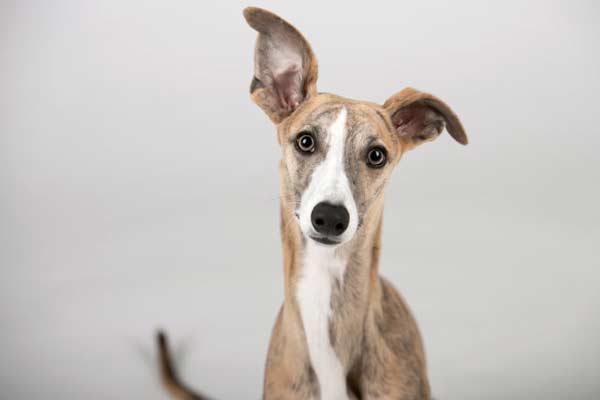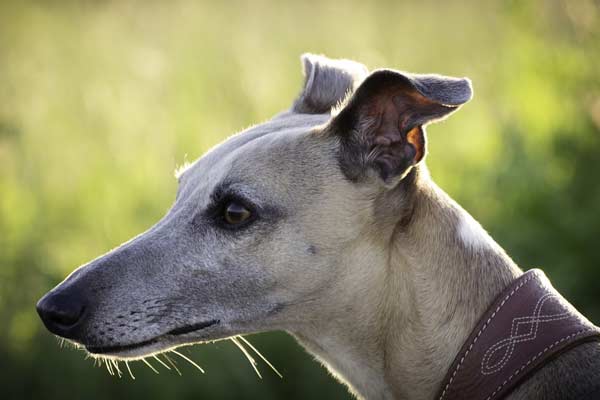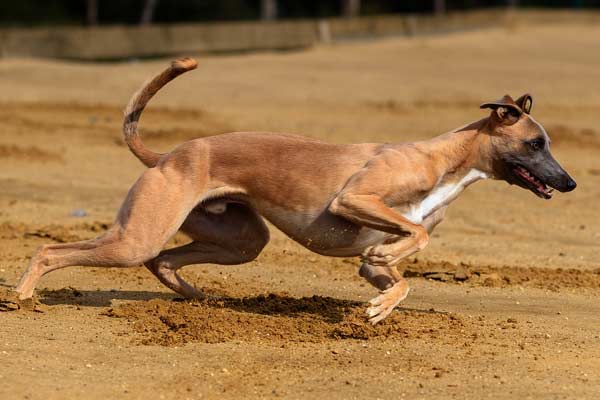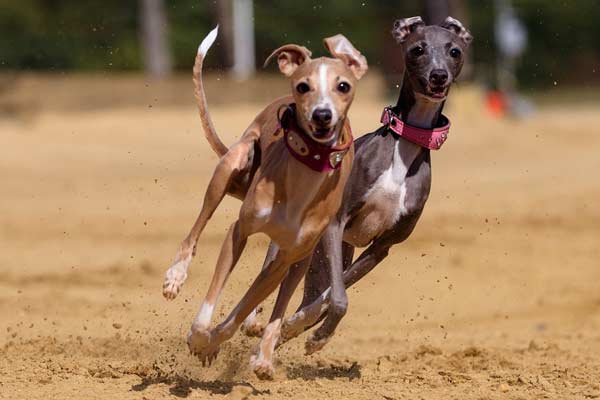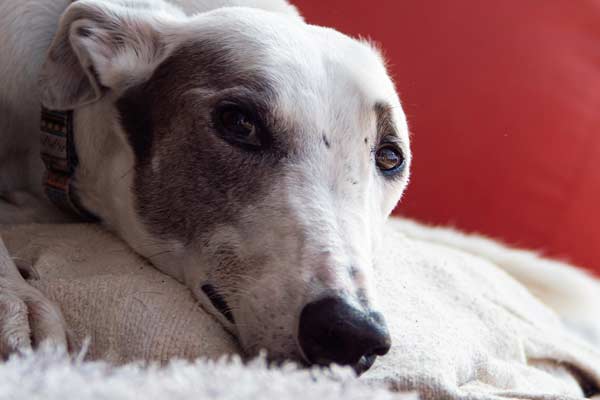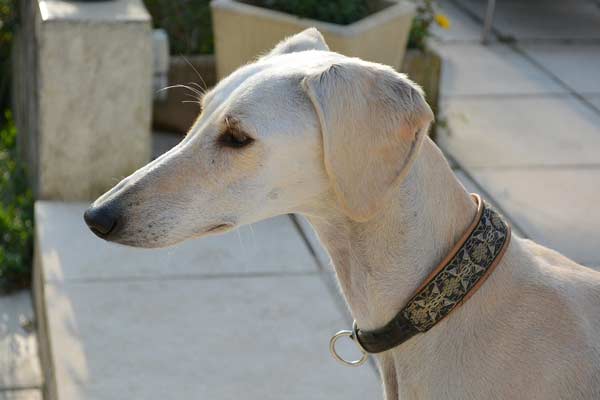Can Greyhounds Sit? Racing Dog, Coursing Hound, or Sphynx Statue
Whether a Greyhound can sit or not is probably not a question you considered much.
After all, a Greyhound is a dog and, therefore, should be able to sit. However, if you own a greyhound from the racetrack, you know that sitting can be easier said than done.
Despite a commonly held belief to the contrary, Greyhounds can sit, although it is awkward to behold at times. Their streamlined physique, muscle-bound haunches, relatively long legs, and coiled spine make a Greyhound’s initial attempts to sit clumsy and sometimes even unsuccessful.
When they learn the command, many ex-racers will leave the position by laying down.
Over time, Greyhounds learn to sit as gracefully as any other dog. They require sensitivity, patience, persistence, and consistency in your training methods.
Why is sitting easy for most dogs?
A sit is among the easiest commands for most dogs to learn because it comes naturally to them.
The English word is abrupt and short, and most breeds pick it up quickly.
Sitting is rewarding because a dog plops its rear down, and you, the owner, make a big deal out of its relatively simple accomplishment.
Most dogs are conformationally built to sit as they are slightly longer than tall.
Sitting makes a stable pyramid for them. For a square dog, sitting is even easier as it is not difficult for the animal to shift its center of gravity the short distance from behind its shoulders to in front of its hips.
Most dogs find sitting easier and more palatable than lying down, requiring them to be partially submissive and vulnerable.
How is sitting different for a Greyhound?
As a speed machine for sprinting, Greyhounds have few opportunities to sit while in racing shape. Once they retire, many of them lack the conformation to sit comfortably or elegantly.
Greyhounds typically have long lines. They are tall at the shoulders, standing 27 to 30 inches high. Their necks add another half a foot or more. Their backs are likewise at least 30 inches long. Finally, their loins are relatively long, and many have a steep croup.
A Greyhound may have never learned to sit effectively and yet has to negotiate a long back with a high center of gravity located just behind the elbows. With the angle of their croup, many Greyhounds are forced to sit on the bottom of their rumps, making them even more upright.
If they fold their hind legs underneath themselves, their knees hit them near the outer edge of the ribs on either side.
A Greyhound’s chest does not have the breadth to stabilize the height and narrowness of its torso.
Some Greyhounds learn to lean forward and use their forelegs as a brace outward from the chest. Otherwise, a Greyhound’s front legs end up squeezed against the chest and between the knees.
Since this posture requires so much strength and balance, many Greyhounds kick their hind legs out to the side or splay them at angles in front of their center of gravity.
Many dogs cannot sit square because of arthritis or hip dysplasia. Young Greyhounds rarely suffer from such orthopedic abnormalities and cannot sit square because of their athleticism.
A muscle-bound Greyhound has trouble sitting
`If your Greyhound looks uncomfortable in a sitting position, he could very well be in a bit of distress.
Especially if it has just come off the track, your Greyhound is a solid muscle. Comprised of around 98% lean body mass, Greyhounds have well-developed musculature in the back, loins, and hindquarters.
More muscle-bound than any other dog breed (including Bully dogs), Greyhounds are often too “tight” to be able to assume a comfortable sitting position.
Even if your Greyhound readily sits, it is unlikely to hold the position for extended periods.
As your Greyhound leaves racing behind and spends more time in domesticated bliss, its muscles relax and become more flexible for sitting. Shorter and stockier Greyhounds usually have an easier time going into a sit.
Can you train a Greyhound to sit?
Not only is it possible that your Greyhound will struggle physically to sit, but she may also have a few training difficulties.
When behaviorist Stanley Cohan completed his renowned list of the most intelligent dogs, he ranked the Greyhound 86th out of about 100 placings (several breeds tied out of the 130+ tested).
While Greyhounds are smart, they are not particularly obedient or trainable, hence their below-average showing in the working intelligence category.
When nomads owned Greyhounds in the ancient Middle East, their dogs were expected to have a significant degree of independence.
This is true of many hunting dogs, especially hounds. Therefore, training a Greyhound to sit, a feat that it already finds unnatural and uncomfortable, can be an uphill battle.
The other challenge with a Greyhound’s behavior is that many will not openly defy you but instead find ways around what you are asking them to do.
Therefore, a Greyhound that does not want to sit will perhaps back up, crouch, or lay down.
You can eventually teach her to sit if you approach a Greyhound like any other dog. Consistency and persistence are the keys to teaching any new skill.
Since dogs can become bored or frustrated with repetition, it is essential to keep your training sessions short.
Recognize your dog’s physical limitations and learn to accept a sitting position that may not be correct or traditional.
Reward any attempts your dog makes to comply with your requests. If it seems exceedingly uncomfortable or unnatural for your dog to sit, no hard rule says you have to train your dog in the command.
Review and “train” skills that your dog already performs well to boost her confidence and retain her willingness to cooperate. When she loses interest in the session, she moves on to something else.
It is always best to change things before your dog reaches the end of her tolerance levels.
How to Train a Greyhound to Sit
Lure training is among the most effective methods to train dogs.
Starting from the Stand Position
- Start in a quiet place without distractions.
- Your dog should be standing and looking at you.
- Prepare yourself with a rubber mat or a blanket if the surface is slippery and treats
- Grab a treat and get your dog to focus on it
- Raise the treat slowly above and a little behind your pet’s head
- As your dog raises his head to follow the treat, his bottom should drop – as the rump drops, even slightly, reward your dog with the treat immediately.
You can repeat this sequence several times for a few minutes a day. As your Greyhound improves, ask him to sink his rear progressively lower before you give the treat.
Common mistakes that your dog can make are moving back or jumping up. While you should not reward either of these actions, you should not punish them.
Many trainers advocate you do not use the command “sit” until your dog acts.
This trains your dog by word association and prevents you from being repetitive and numbing your dog to the command in the beginning.
Start training in small increments and eventually group these tiny steps. This is called shaping a behavior.
Starting From Down
It is much easier for many owners to teach their Greyhound to sit from a position already lying down. This is another form of lure training with shaping.
- Get prepared – stability mats and treats.
- Get your dog to lie down.
- Attract your dog’s attention, moving her focus to the treat in your hand
- Place the treat directly in front of your dog’s nose and slowly raise it.
- Reward your dog with the treat for every incremental raise of the head and then subsequently the body – three or more increments are acceptable; only reward the shoulders and elbows coming up, not a stand.
If you are used to other breeds, always be aware that sitting is likely not fun for your Greyhound.
Where another dog might learn even “sit-stay” in a few weeks, your Greyhound will need months to learn how to sit consistently on command.
Teaching “sit-stay” is not recommended for Greyhounds because it is usually too uncomfortable for them to sit for long.
However, as his fitness level changes, you may find you can later teach your Greyhound to sit and stay.
A valuable alternative for Greyhounds is the “down-stay” command, as they usually prefer to lie down instead of sitting.
Greyhounds, like most dogs, are situational learners. They must learn each skill, including sitting, in several locations amidst different forms of distractions before they will follow the command consistently.
Example
This is a great demonstration video. It demonstrates a couple of training methods to get your Greyhound to learn to sit and teaches you how to use a hill to balance your Greyhound’s conformational challenges. Eventually, most Greyhounds learn to compensate.
Although using the command “sit” is effective for many dogs and improves safety, you can use “down” or “stay” as substitutes for an arthritic or particularly resistant Greyhound.
